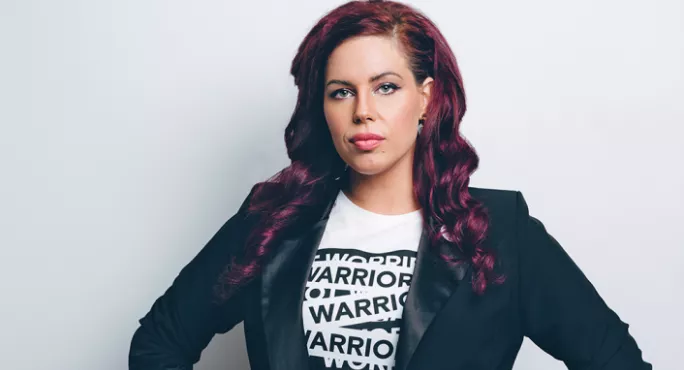- Home
- ‘Children need to know anger is a natural emotion’
‘Children need to know anger is a natural emotion’

Regular readers of my column might have noticed that I didn’t write anything last week. That’s because for most of October I was away working with children in Nepal (before flying to Thailand to present to educators from all over the Far East. Although I didn’t see much of Bangkok as, like most unacclimatised Westerners, I spent my first week there with my head in a toilet).
Whenever I go to work abroad, I am struck by the extent to which, although cultures differ radically from one another, children are essentially the same. A little better behaved in Europe, perhaps. A little more confident in the US. A little more obsessively concerned with their academic performance in China. But basically the same.
Kathmandu is not only situated in a developing country but is still in recovery from the devastating earthquake of April 2015, rendering even a simple stroll along the average street an experience fraught with health and safety hazards. Despite this, one of the major issues amongst young people, I was told by a charity rep who has worked there for more than a decade, is self-harm.
One of the most misleading and pernicious myths around mental health issues in the UK is that they are a “luxury”, a “first-world problem”, only manifesting in those who don’t have “more important things” to worry about.
This might seem an archaic viewpoint, but it was reinforced to me only this week when, whilst giving evidence to Parliament, a Tory MP questioned my assertion that there is an evidence-based link between poverty and poor mental health, maintaining that mental illness was “rare” during the economic depression of the 1920s (I know, I know). Just 24 hours later, I was giving a talk to parents in which I was asked “why under-30s simply aren’t resilient any more” when “they have it so much better than previous generations”.
The link between mental ill-health and poverty
Of course, mental health issues are equal-opportunity in just the same way physical health problems are but, just like their physical counterparts, there is actually a greater prevalence (as well as less adequate care) amongst the poor - as evidenced by a life expectancy gap of 8.4 years between the highest and lowest earners in the UK.
In Kathmandu, a popular question asked to me by boys in my classes was how they could “avoid” feeling angry.
“Sometimes I feel angry,” one of them said to me, as though confessing some terrible, hideous secret. “Yes,” I replied, “everyone does.” “But I don’t want to. Can you help me not to get angry?” he asked.
Nepali locals told me that displays of anger were frowned upon, even taboo in their culture. I must confess to having noticed and found this, as a visitor to the country, charming. I didn’t hear one raised voice during my entire time there. Everyone I met was incredibly chilled and friendly. It hadn’t occurred to me until then that they might want to show anger but were prevented by convention.
If internalised, so my therapist tells me, anger is converted into self-hatred - I wondered if there was a link between this and the self-harm I’d been told was common.
Like all the lessons we learn when we travel, my epiphany in Nepal has direct resonance with my life back at home. After all, Nepal isn’t the only country with issues around expressions of anger. Britain, which is still clinging on to its “stiff upper lip”, doesn’t really understand how to do rage in a healthy way, either. British girls still tend to be socialised in such a way as to consider anger “unladylike” and “inappropriate”. Later in life, women who express anger are still branded “unstable” or “hysterical”. This is one possible explanation for the fact that self-harm remains higher in girls in the UK - one in four have self-harmed in the past year, compared with one in 10 boys.
A recent study involving boys in their first year of primary school, conversely, found that they were only able to identify two emotions they felt were acceptable for them to display - happy and angry. Indeed, as comedian Russell Kane points out, many British men essentially have two modes - buttoned up, faux-politeness and drunken aggression. This is the blueprint with which British boys grow up, in a culture which simultaneously tells them they must constantly prove their masculinity.
Fortunately, things are changing. Gender stereotypes are being challenged by the likes of authors Robert Webb and Chris Hemmings, and a swathe of young feminists such as Chidera Eggerue, Grace Campbell and Ellen Jones. There’s still work to be done, however, and bearing in mind that we lay down 85 per cent of our psychological programming before the age of 5 (and therefore before we even set foot into a school), this must begin at home. The first step is to impress upon children that anger is not inherently bad. It’s just a feeling, and an inevitable one at that. It is how it is expressed that renders it either appropriate or not.
How can schools play their part in this? Stay tuned…
Natasha Devon MBE is the former government mental health champion. She is a writer and campaigner and visits an average of three schools per week all over the UK. She tweets @_natashadevon. Find out more about her work here
Keep reading for just £1 per month
You've reached your limit of free articles this month. Subscribe for £1 per month for three months and get:
- Unlimited access to all Tes magazine content
- Exclusive subscriber-only stories
- Award-winning email newsletters


